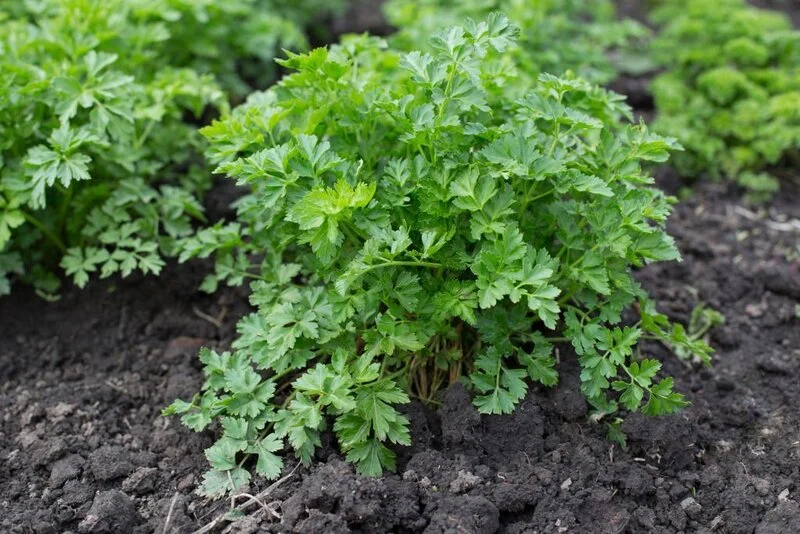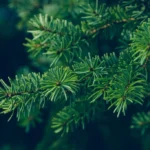The sight of healthy, vibrant herbs growing in one’s garden is a source of great pride for any green thumb. However, it can be disheartening to notice that your parsley has turned yellow. Don’t be alarmed if you see that the leaves of your parsley plant have turned yellow. Many gardeners have had this problem. This article will discuss potential causes for this phenomena and offer advice for restoring your parsley to its former lush green state.
- Easy to grow
- Flat, green leaves are easy to chop
- Garden use: Containers, flower & herb beds
- Culinary use: Garnish, seasoning, salads, palate cleanser
- Plant in full sun to partial shade for the best yields
Understanding Parsley
Parsley, or Petroselinum crispum, is a common herb that originated in the Mediterranean. The most prevalent types of parsley are those with curly leaves and those with flat, Italian-style leaves. This flavoring herb is packed with healthy nutrients including vitamins and antioxidants, and it also happens to taste great.
Because it is a biennial plant, parsley has a two-year life cycle. From building a sturdy root system to flowering and producing seeds, the entire life cycle of the plant takes two years. Parsley grows best in partial shade, in organically rich, well-drained soil that is kept moist at all times. When given the right conditions, parsley may be a very resilient herb. But, like all plants, it can have issues including leaf yellowing.
Common Causes of Yellowing in Parsley
Yellowing leaves, known scientifically as chlorosis, can be a signal that your parsley is under stress. Let’s explore some common causes:
- Watering issues: The yellowing of parsley leaves can be caused by either overwatering or underwatering. The plant could be drowning if it receives an excessive amount of water. It may be dehydrated if it is not receiving enough to eat.
- Nutrient deficiency: Yellowing can occur when vital nutrients, especially nitrogen, are deficient. A plant’s general health may be compromised by nutrient deficiency in the soil.
- Diseases and pests: Certain diseases, like root rot or fungal infections, can cause yellow leaves. Pests like aphids can also cause similar damage.
- Light and temperature stress: Too much sunlight or high temperatures can cause parsley leaves to yellow and wilt.
Understanding these causes is the first step to identifying the problem and returning your parsley to its robust, green self.
Diagnosing the Problem
The yellowing of your parsley is a distress signal. The challenge is in deciphering its message. First, you should examine the ground. Do you think it’s too wet or dry? Keep in mind that you want to have moist soil but not a muddy mess. Now, let’s zoom in on the foliage. Is the color all over, or do they have green veins with yellow in between? Lack of essential nutrients may be to blame.
Always check the underside of leaves for insect damage. Infestation signs may include the presence of tiny bugs or a sticky residue. Last but not least, think about where you keep your parsley. Is there too much or too little sunlight hitting it? Is it located somewhere that experiences extreme temperature swings?
Solutions to Prevent and Treat Yellowing Parsley
Finding the root of the problem is the first step towards fixing it. To solve watering problems, try changing how often you water. You should only water when the top inch of soil is dry, and only if the soil drains adequately.
Soil testing is recommended if you suspect a nutrient shortage. By applying a well-balanced organic fertilizer, depleted nutrients can be restored.
- Vegetable garden fertilizer
In order to stop the spread of disease and pests, damaged leaves must be removed quickly. Depending on the severity of the issue, a pesticide or fungicide may be required.
Try relocating your parsley to a position where it will receive at least six hours of sunlight per day without being overheated if you suspect that this is the cause of the problem.
Conclusion
At first glance, yellowing parsley may seem alarming. But you can figure out what’s wrong and bring your plant back to health with some investigation and tender loving care. Always keep in mind that learning what your plants require and being observant are the two most important aspects of gardening. Don’t let a tiny bit of yellowing discourage you. Think of it as a chance to develop your gardening skills, just as the parsley will start growing again under your watchful eye. Enjoy your gardening!





